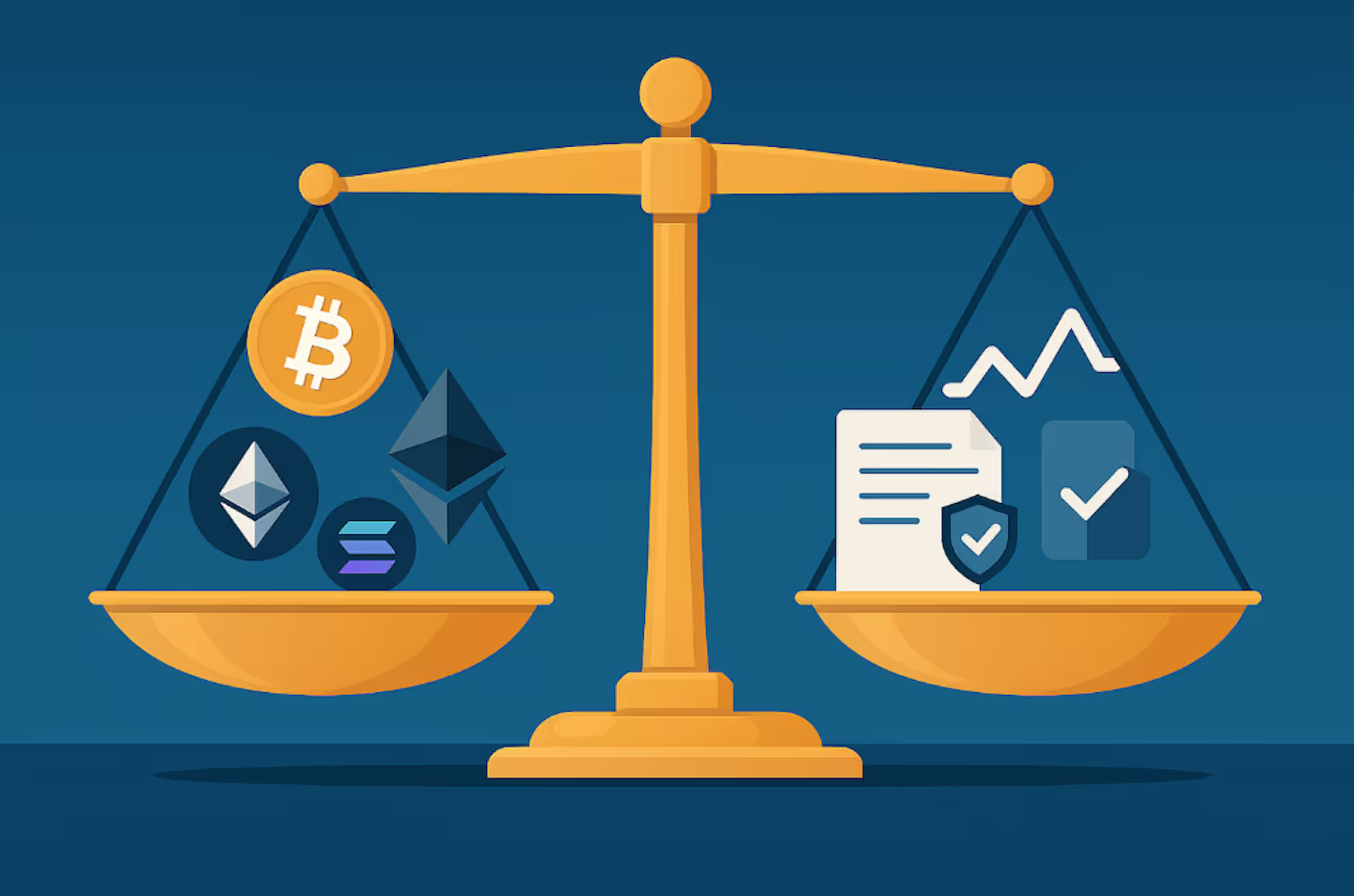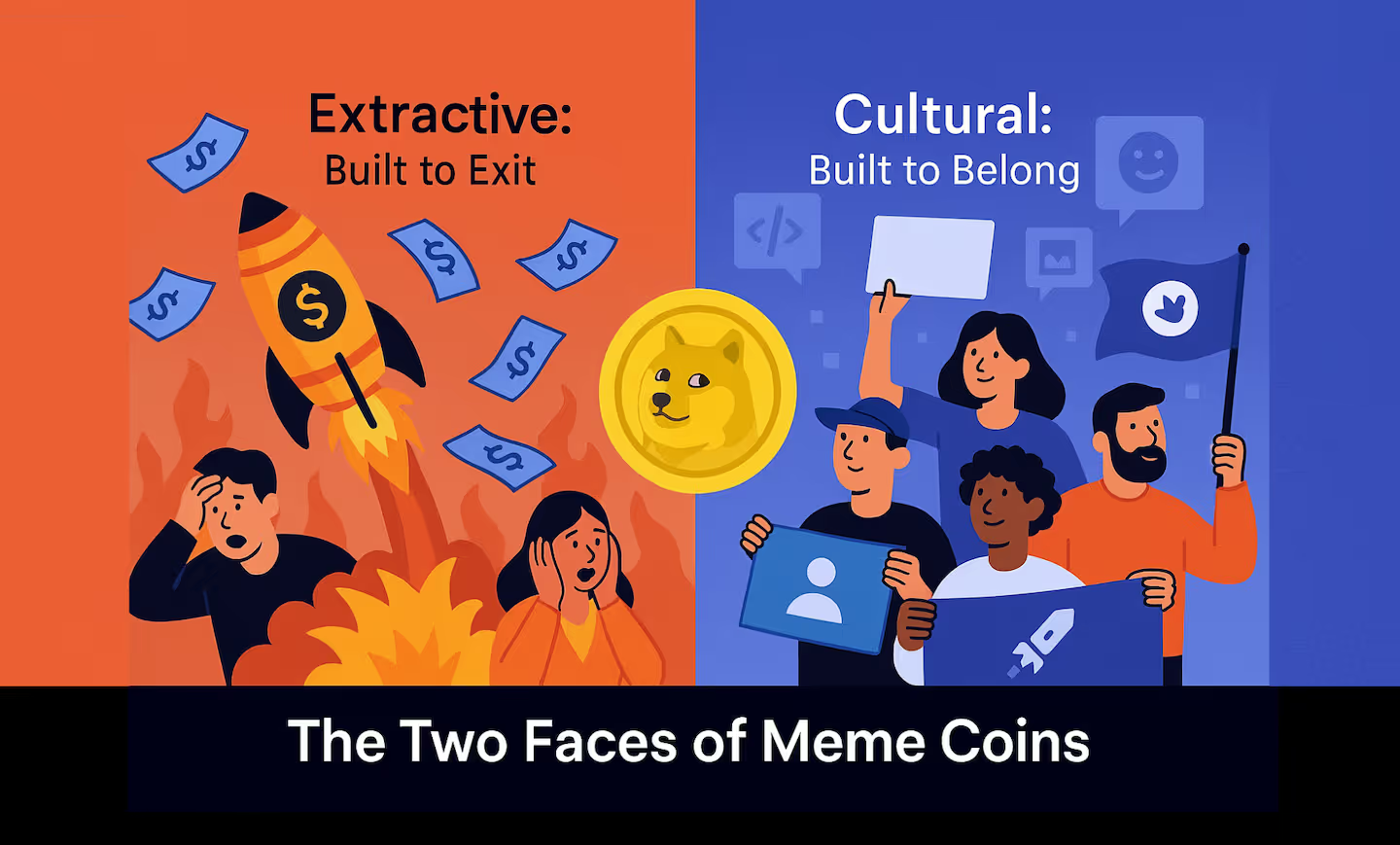More Than a Joke: The Cultural Power of Meme Coins
Meme coins: extractive hype or digital identity? The culture behind crypto’s wildest tokens
As Pump.fun meme coins surge towards listings and dominate on-chain activity, it’s time to dig deeper into the role of meme coins in the crypto landscape.
Often dismissed as noise—or worse—meme coins face criticism not just for their volatility, but for the capital they attract. Critics argue they siphon liquidity away from “real” projects building useful infrastructure, and that many meme coins are inherently extractive—launched to ride the hype, dump on buyers, and disappear.
Their ethos stands in stark contrast to value-creating or ecosystem-building tokens, which aim to contribute to a protocol, foster community, or strengthen infrastructure over time.
And yet, some meme coins are proving surprisingly durable. More than that, they’re helping define a new kind of asset class—cultural tokens—that thrive not on traditional utility, but on narrative, community, and identity.
🐶 From Satire to Market Cap
Meme coins began as parody. Dogecoin, launched in 2013, was meant to mock the seriousness of altcoins. Its mascot—a Shiba Inu lifted from an internet meme—signalled that it wasn’t playing by the rules.
But the joke gained traction. Then momentum. Then market cap. Dogecoin became a movement—and eventually a top 10 crypto asset.
This tells us something fundamental: in crypto, value creation often starts with belief—not a roadmap. And meme coins, above all, are belief-driven.
🎭 What Culture Do Meme Coins Actually Represent?
Meme coins don’t succeed because of what they do—but because of what they mean. Their cultural power rests in the stories, symbols, and digital tribes they enable.
Let’s unpack the culture they channel:
1. Rebellion Against Institutions
Meme coins are often a playful middle finger to financial elitism.
They challenge the idea that only tokens backed by venture capital, protocol revenue, or whitepapers deserve market attention. Instead, meme coins reflect a bottom-up approach to value creation.
:speaking_head_in_silhouette: Message: We don’t need permission to participate in crypto.
2. Openness & Accessibility
Meme coins are radically inclusive. There are no complex docs to read, no tokenomics to master, no governance tokens to stake.
You just join the vibe. Anyone with a wallet and a meme can participate.
🗣️ Message: Web3 is for everyone, not just insiders.
3. Identity in the Internet Age
Holding a meme coin is often less about speculation than self-expression. Your $DOGE or $PEPE bag isn’t just a position—it’s a digital badge.
Meme coins let people build identity around symbols, mascots, slogans, and memes that spread faster than most whitepapers.
🗣️ Message: In Web3, tokens are culture. Coins are personality.
4. Narratives as Utility
While traditional crypto projects define utility as things like staking, yield farming, or cross-chain swaps (etc.), meme coins offer narrative utility: the ability to spread, to go viral, to mobilize a crowd.
Importantly, some meme coins are now extending their value beyond culture:
BONK has actively supported the Solana ecosystem, funding devs and projects.
Others are experimenting with DAO treasuries, grants, or incentive programs.
🗣️ Message: Utility can be financial, cultural—or community-powered.
5. Finance as Play
Crypto often takes itself very seriously. Meme coins don’t.
That irreverence is part of the appeal. By embracing absurdity, meme coins invite people to have fun with finance, remix narratives, and participate in ways that feel social and spontaneous.
🗣️ Message: Play is not a distraction—it’s a feature.
🌍 Meme Coins as Cultural Infrastructure
This cultural layer isn’t trivial—it’s sticky. In an attention-driven market, memes are viral rails, and meme coins are programmable memes.
They:
Foster resilient communities
Capture zeitgeist and digital emotion
Build liquidity through attention
Meme coins are redefining how capital forms around culture. And they’re building memetic capital—value generated not by function, but by belief and belonging.
Related Reading:
Discover how Pump.fun is transforming meme coin creation into a 24/7 on-chain speculation engine in our latest article: Pump.fun and the Meme Coin Machine.
Explore how NFTs are evolving beyond art to power identity, access, and ownership in Web3: Beyond the JPEG: How NFT Utility Is Quietly Evolving.
Others articles

Thought leadership
Why DATs reset after the bubble, and why today’s entry point is stronger.

Thought leadership
How the GENIUS Act transforms U.S. stablecoin rules and global market structure.

